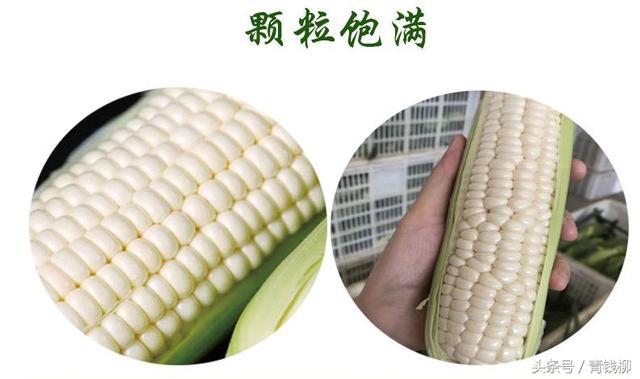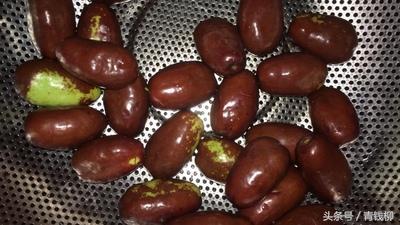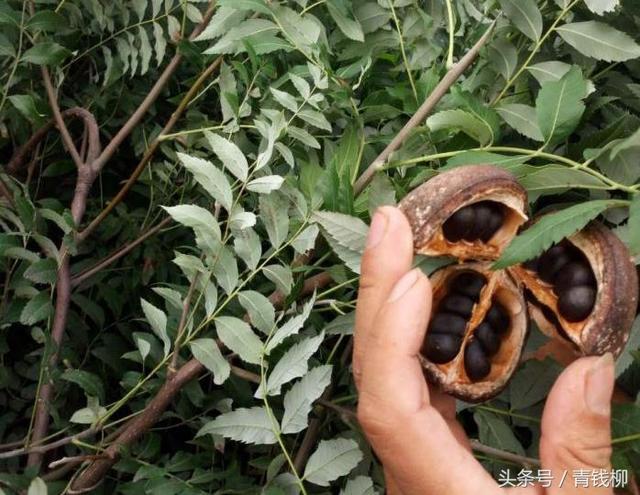Efficient planting techniques of fresh Sweet waxy Corn in North China

Efficient planting techniques of fresh Sweet waxy Corn in North China
1 select improved varieties and plant them in isolation
Sweet and waxy corn varieties should have the characteristics of moderate sweet and waxy, pure flavor, tender texture, rich nutrition, good appearance and so on. Due to the cross between sweet and waxy corn and common corn, it is easy to lose the species (sweetness and waxy) of the original maize varieties, and the worse the isolation condition is, the lower the quality is. Therefore, the cultivation of sweet and waxy corn should be isolated from ordinary corn. Isolation method: ① spatial isolation: common corn or other types of corn that bloomed at the same time as sweet and waxy corn were not planted within 300m and 500m around the field of planting sweet and waxy corn. ② time isolation: that is, in the same planting area, the sowing date of sweet and waxy corn was advanced or postponed, so that the flowering period of sweet waxy corn was staggered with other corn in adjacent plots for 20 days, or even longer. Through forests, orchards, villages, mountains, rivers and other natural barriers to block the introduction of foreign pollen, to achieve isolation.
(2) reasonable close planting to promote strong seedlings
The commercial quality of fresh sweet and waxy corn is closely related to the planting density. Most sweet and waxy maize varieties have the characteristics of multi-ear, that is, one plant can grow 2 or more ears, and sparse ear planting is more. Therefore, the suitable density for planting sweet and waxy corn in production is generally 60.75 million plants / hm2, the density of early-maturing varieties is slightly higher and that of late-maturing varieties is slightly lower. In order to concentrate nutrients on the main stem ear, ensure the commerciality of the ear and improve the ventilation and light transmission conditions in the field, according to its tillering characteristics, tillers must be removed in time and weak plants must be removed.
Before sowing, select the seeds with sound development and high germination rate, remove insect seeds, bad seeds and mildew seeds, and soak the seeds according to size. At the same time, nitrogen, phosphorus and potassium compound fertilizer was applied as base fertilizer before sowing to ensure adequate nutrient supply for seed germination and seedling emergence and promote the early emergence of strong seedlings. When sowing, control soil water content, adopt large and small row planting (large row spacing 80~90cm, small row spacing 50~60cm), plant spacing depends on density, sowing depth 3~5cm, 2-3 grains per hole, seed amount 15~18kg/hm2, to ensure the whole seedling. In case of drought after sowing, straw and straw can be covered to prevent the soil from losing water, causing the seeds to dry up and sprouting. At the same time, the rainstorm can also effectively prevent the soil from hardening and causing stuffy seeds and rotten buds.
3 balanced fertilization and scientific management
The purpose of fresh corn is to eat early and tender ears, and the growth period is short. therefore, early seedling determination, early ploughing, early weeding and early fertilization are needed in management. According to the characteristics of short growth period of sweet and waxy corn, the application of organic fertilizer can improve the ability of soil fertilizer conservation and nutrient accumulation of grains. Fertilization should be formulated according to different soil fertility levels and fertilizer requirements of different varieties. In general, N, P 2O 5 and K 2O were applied in 1hm2 fertility soil as 240~300kg, 150~225kg and 225~300kg, and 30% of the nitrogen fertilizer was concentrated in the seeding hole. 10% ~ 20% of the nitrogen fertilizer was used as seedling fertilizer, which was topdressing at the 3rd and 4th leaf of seedlings, paying attention to no or less application of large seedlings and raising seedlings to promote balance. 40% ~ 50% panicle fertilizer was applied when 7-8 leaves were unfolded to promote the growth of panicle leaves and panicle differentiation, focusing on large panicles.
Sweet and waxy corn can be harvested at the milking stage, so at the early filling stage, according to the amount of fertilizer and seedling condition in the early stage, grain fertilizer can be applied as appropriate, and biochemical agents can also be sprayed on the leaf to promote grain filling, achieve large ear and grain satiety, go on the market earlier and improve the externality of the commodity. Topdressing should be combined with ploughing and weeding and deep application of 10~15cm, phosphorus and potassium fertilizer should be used as a basic fertilizer to promote the early development of strong seedlings, at the same time, attention should be paid to the supplementary application of corn micro-fertilizer to improve the quality and yield of fresh corn.
(4) Disease and pest control
4.1 Agricultural control
First of all, through ploughing, stubble and other methods to reduce the number of insect sources, use little or no pesticides as far as possible, give priority to the selection of high-efficiency, low-toxicity, low-residue pesticides, the use of biological pesticides. Seedling transplanting and plastic film mulching can also be used to effectively avoid the harm of early generation borer.
4.2 Chemical control
For underground pests such as mole cricket, grub, ground tiger, etc., phoxim or 90% crystal trichlorfon 250g mixed with water 5kg can be dissolved and sprayed on the weeds chopped by 100kg to make poison bait, which can also be sprayed with 1000 times of 25% Kuaishaling EC or 1000 times of 52.5% Nongdile EC during the peak period of young larvae. Corn borer can be used for biological control by inoculating Trichogramma eggs at the big trumpet stage, or by filling with highly efficient biological agents without residue, or with 1000 times of 5% Regent suspension, or 1000 times of 25% Kuaishaling EC, or 48% chlorpyrifos 100ml, and the control effect is more than 90%. In the case of overcast, rainy and low temperature weather during the flowering and pollination period, it is easy to cause uncoordinated growth or poor pollination of female and male ears, so as to carry out artificial pollination in time to increase grains, reduce baldness, and improve yield and commercialization of ears.
5 timely harvest
The suitable harvest time of different varieties should be determined according to their variety characteristics, seasonal air temperature and processing and utilization requirements. The time of fresh ear on the market was 17-23 days after flowering and pollination, 20-28 days for super-sweet corn, 18-30 days for added sweet corn, and 3 days for late-maturing varieties. The suitable harvest time of waxy corn is 18-25 days after flowering and pollination. However, in the case of spring sowing, the harvest time is in the high temperature season, and the suitable harvest time is very short. In the case of autumn sowing, the harvest time is in the cool season, and the suitable harvest time is relatively long. Fresh corn should also pay attention to fresh-keeping, short-term fresh-keeping pay attention not to peel off bracts, spread out as far as possible to reduce the temperature during transportation, super sweet corn from picking to market as far as possible within 2 hours, waxy corn can be slightly longer, but also within 24 hours.
- Prev

Management Technology of Full-fruiting Period of Long Jujube in Lingwu
Lingwu long jujube full fruit management technology Lingwu long jujube fruit color, meat thick, crisp, sour taste, unique flavor, rich in various minerals and vitamins. Since 2008, Lingwu City has successfully introduced Lingwu jujube in solar greenhouse.
- Next

Characteristics and cultivation techniques of Xanthoceras sorbifolia
The characteristics and cultivation techniques of Xanthoceras sorbifolia, also known as Chaenomeles papaya, Wenguo fruit, Wendeng fruit, Mengming monk Dengmaodao, belong to the genus Xanthomonaceae in the plant classification, and belong to the only species, which is a unique woody oil tree species in the north of China. ...
Related
- Wuhan Hospital Iron Tree Blooming Result Was Instantly Frightened by the Gardener Master
- Which variety of camellia is the most fragrant and best? Which one do you like best?
- What is the small blue coat, the breeding methods and matters needing attention of the succulent plant
- Dormancy time and maintenance management of succulent plants during dormancy
- Minas succulent how to raise, Minas succulent plant pictures
- What are the varieties of winter succulent plants
- How to raise succulent plants in twelve rolls? let's take a look at some experience of breeding twelve rolls.
- Attention should be paid to water control for succulent plants during dormant period (winter and summer)
- Watering experience of twelve rolls of succulent plants
- Techniques for fertilizing succulent plants. An article will let you know how to fertilize succulent plants.

